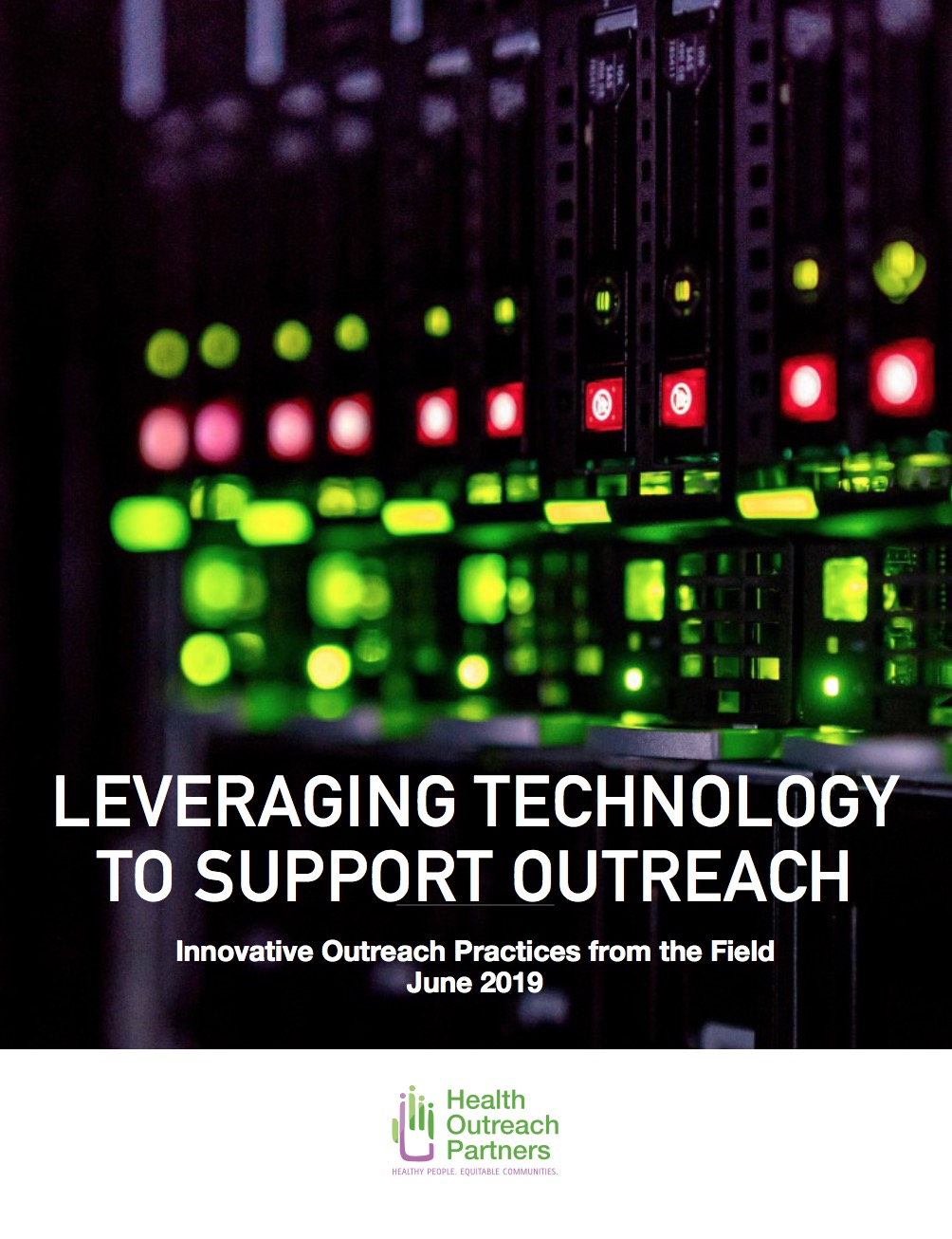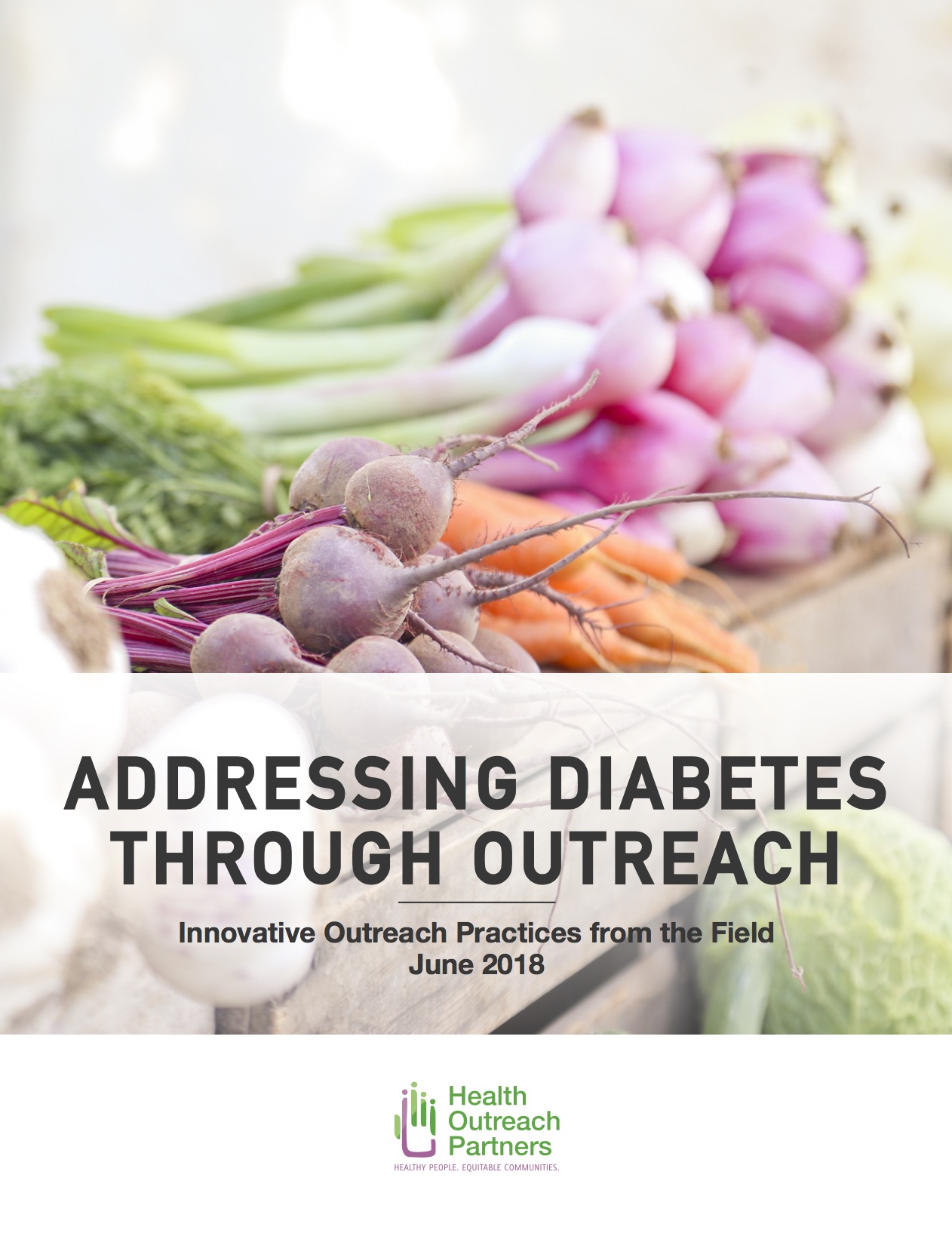
Leveraging Technology to Support Outreach: Innovative Outreach Practices from the Field
In 2019, HOP focused on the creative use of technology to improve the primary function of outreach—creating connections with vulnerable and underserved populations and increasing access to care. In recent years, health centers have made great strides towards improving patient access to care through the rapid uptake of health information technology (HIT). Despite the growing prevalence of HIT within the United States health sector, there is still limited understanding of the variety of ways health centers are using technology for patient engagement. This resource describes examples of how technology is being used to support or complement outreach services nationwide and suggests opportunities for replication.
Authors: Diana Lieu, Liam Spurgeon
Please provide the following information to access this resource.

Addressing Diabetes Through Outreach: Innovative Outreach Practices from the Field
Diabetes affects more than 30 million people in the United States. More than fourteen percent (14.3%) of patients served by health centers have diagnosed diabetes. Multi-tiered efforts to prevent, treat and manage diabetes are critical in reducing the burden of diabetes, particularly for medically underserved communities, including racial and ethnic minority populations. Diabetes is manageable through physical activity, diet, and appropriate use of insulin and oral medications to lower blood sugar (glucose) levels. Outreach can play a critical role in facilitating patient access to health care and social services that support pre-diabetic and diabetic patients, and their families, in understanding and managing their chronic illness.
Health Outreach Partners developed Addressing Diabetes Through Outreach: Innovative Outreach Practices from the Field as a resource for existing and potential health centers, Primary Care Associations, and other community-based organizations that are interested in using outreach to address diabetes among their patient populations. The profiles included in this resource offer background information about the featured organization, a description of the innovative outreach practice, and key lessons learned, as shared by the featured health center.
Author: Caitlin Ruppel
Please provide the following information to access this resource.
10 Years of Innovative Outreach Practices: A Collection of Outreach Strategies from the Field
Health Outreach Partners (HOP) is pleased to present 10 Years of Innovative Outreach Practices: A Collection of Outreach Strategies from the Field. HOP revisited the practices featured in its Innovative Outreach Practices Reports over the past 10 years and chose to highlight 13 exemplary outreach practices that can be adapted and replicated in other communities.
HOP developed a detailed selection process for the practices that would be included in this publication. The process included grouping previously featured innovative outreach practices into broad categories, identifying categories with eight or more similar practices, and reviewing each practice under these categories using HOP’s innovative outreach practice criteria. HOP identified 23 potential practices for inclusion and interviewed key contacts at each of the implementing organizations. HOP program staff reviewed the practices again, along with the updated information, to determine if they 1) continue to show positive outcomes, and 2) can be readily replicated in other communities. From the 23 practices initially selected for consideration, 13 met all inclusion criteria and are highlighted in this publication.
DOWNLOAD REPORT
